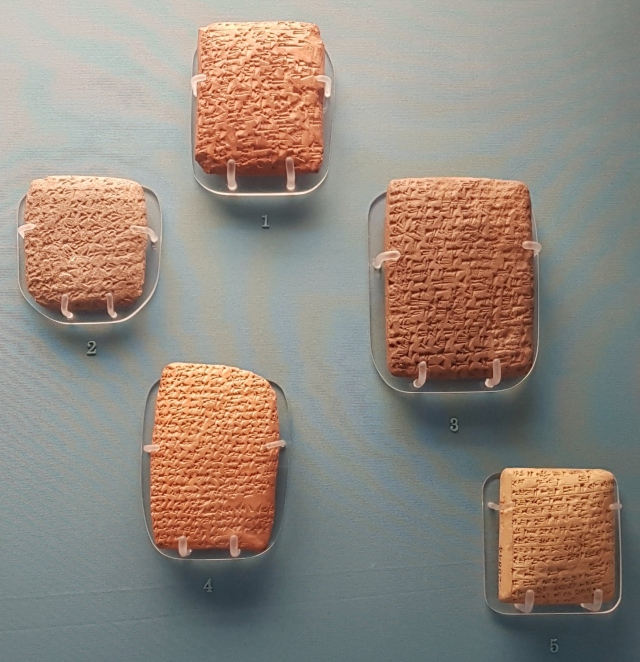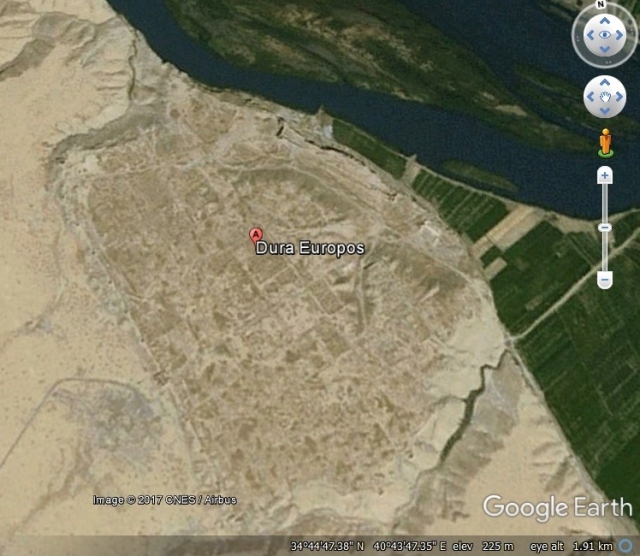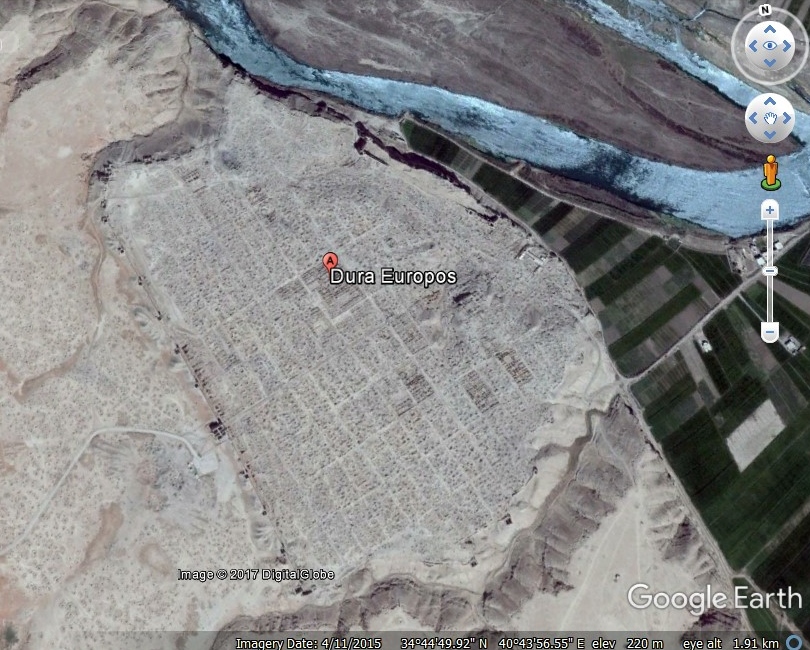Purchased antiquities suffer from many problems. They lack useful archaeological provenance, are often forgeries and include recently looted objects that have been ‘laundered’ with fake provenances and spurious histories. These problems affect unprovenanced antiquities whenever they were purchased, but are particularly pertinent to those artefacts currently circulating and recently obtained.
While there is a good argument to end the entire antiquities trade, at present it is legal to purchase archaeological artefacts provided they fulfill certain specific requirements. These requirements are intended to reduce the likelihood that the artefacts for sale were recently looted from archaeological sites or museums, and rely upon the stringent laws that the countries most affected by antiquities theft have enacted over the last decades. Historically (and particularly before 1950) the legality of purchasing or exporting antiquities varied greatly depending on their country of origin and thus there are ongoing legal and ethical debates about certain artefacts in museum and private collections. While these debates are illuminating, they are a large subject and do not have much bearing on the current legal framework or the myths that surround the modern antiquities trade.
‘Black market’ or ‘illegal’ antiquities are artefacts that do not meet the requirements, chiefly relating to provenance, that are intended to prevent recently looted or stolen antiquities from being sold legally. Illegal antiquities are obtained and sold against the laws of the countries that they came from and, depending upon their precise provenance and transit routes, their purchase may also contravene the laws of various intermediate countries and country of the purchaser.
The extent of the black market trade in antiquities has recently been emphasised by publicity over the US firm Hobby Lobby’s purchase of illegal antiquities to stock the owner’s Museum of the Bible. There is no dispute about the black market origin of these objects and Hobby Lobby has agreed to pay the US government $3 million in fines and forfeit the objects. The extensive press coverage of the Hobby Lobby case is due to interest in the company following an unrelated Supreme Court victory relating to their employee healthcare package. But the publicity provides an opportunity to revisit the stale arguments and myths about black market antiquities purchases. It is rare to find all of these myths deployed at once (although at least one article supporting Hobby Lobby manages to use all of these arguments, even those that are mutually exclusive), but they recur in various combinations whenever someone tries to justify purchasing or publishing black market antiquities.
Black market antiquities and the looting of archaeological sites.
It is widely recognised that removing artefacts from archaeological sites without proper excavation, recording or archaeological analysis destroys vast amounts of scientific information and the knowledge of the ancient world that this would undoubtedly produce. This destruction affects both the antiquities sold on to the open market without provenance and other artefacts, structures and deposits removed with the antiquity and then discarded, which could otherwise contribute to scientific knowledge.
Those who wish to justify the the purchase of black market antiquities often argue that their purchases do not contribute to the ongoing looting of archaeological sites in an attempt to minimise or justify their actions.
Myth 1: Purchasing antiquities improves the prospects for their protection by increasing their value, raising incentives for the protection and conservation of antiquities, museums and archaeological sites.
This repellent argument assumes that many countries won’t bother to protect archaeological sites or curate museum collections unless the objects in them have a high market value. So, goes the argument, purchasing antiquities raises their value and encourages the protection and curation of archaeological sites and collections.
The Reality
Leaving aside its patronising and racist overtones, the archaeological problem with this argument is that it completely misunderstands the nature of antiquities. It views archaeological artefacts like diamonds, precious objects dug out of base rock whose value depends entirely upon the market’s appetite for them.
Antiquities are not diamonds. They are not dug out of base rock, but out of archaeological sites. Their archaeological context contains information of general scientific value and other data that is directly pertinent to the antiquity, all of which is lost when an artefact is looted. Black market artefacts (whether originally from a museum or an archaeological site) are typically sold either devoid of provenance or with a fake provenance, and information of direct relevance to the object is lost. This includes basic information like its original location (from the general site where it was found to the specific layer, building etc), period, date and whether it was found with any other objects that might together reveal more about it.

The Hobby Lobby case included a large number of clay tablets with cuneiform writing. Amongst the most famous such tablets are the Amarna letters (see above). These are a group (or assemblage in archaeological parlance) of clay tablets with cuneiform writing that were found in the Egyptian city of Aketaten (the site of which is known as Amarna). Although there is some uncertainty (and dispute) about how the letters found their way into certain museum collections at the end of the 19th century, sufficient numbers of them were excavated from Amarna to provide the secure archaeological context that gives them such great scientific value. They are dated to the reign of the Pharaoh Akhenaten of the 18th Egyptian Dynasty, who ruled in the 14th century BC during the Egyptian New Kingdom (in the Late Bronze Age). Their original location is known, the site (Amarna), general (administrative) area of the city and, in some cases, the specific buildings. The Amarna letters can also be associated with each other as an assemblage, making it possible to use information in different tablets to build up a better picture of Egyptian foreign policy during this period.
If the Amarna letters were found today (or stolen from museum stores) and sold individually on the black market, much of this information would be lost. They would be given a spurious provenance or no provenance at all. We probably wouldn’t know which country they came from (since many sites across the ancient Near East were involved in exchanging such letters), much less which site or building, and we wouldn’t know which of them were found together and which were found hundreds or thousands of miles away. As a result their contribution to our understanding of the ancient world would be much reduced, even though the actual artefacts would survive.
Proponents of this myth fundamentally misunderstand the nature of archaeological artefacts. Unlike diamonds a key element of the value (both scientific and economic) of antiquities is their provenance. The more precise that provenance, the more can be learned from an artefact. Those who purchase black market antiquities that have been stripped of that provenance through looting from an archaeological site or theft from a museum, are not increasing but destroying the value of those objects and any others that are removed (deliberately or accidentally) at the same time.
An additional problem of the lack of provenance associated with black market antiquities is that it leaves room for fakes to enter the market. Fakes have always been a problem for collectors and there have been a number of high-profile cases where even artefacts purchased through legal channels have been identified as fakes. Black market objects carry an even greater risk of forgery. Furthermore, antiquities with a religious theme are particularly popular with forgers and those with religious motives are often targeted by them, perhaps because the desire to believe they are genuine outweighs caution amongst certain purchasers. Recent examples include the various biblical forgeries created over decades by Oded Galan and the famous Gospel of Jesus Wife debacle. Not only have Hobby Lobby reduced the scientific and economic value of the artefacts they purchased, they placed themselves at risk of being duped by forgers.
Myth 2: Black market antiquities are not looted from archaeological sites, but only come from museums that have been destroyed or looted during conflict.
Aside from the desperate desire of some to argue that purchasing black market antiquities has no effect on looting, this myth may also be a result of ignorance of the amount of archaeological material still left in situ at sites across the world. Given the long period of research across many areas, especially in the Middle East, some people find it hard to believe there is anything left in the ground.
The Reality
It is certainly possible that some black market antiquities (including some of the clay tablets and bullae purchased by Hobby Lobby) were originally looted from museums. But one of the main problems with purchasing black market antiquities is that it’s completely impossible to know where these objects came from.
Many, if not all, black market antiquities from the ancient Near East are likely to have been looted recently from sites in Iraq and Syria. The scale of the looting that has taken place is unprecedented. This has prompted researchers like Sarah Parcak and groups like EAMENA and the Trafficking Culture group to undertake research into the extent of looting. Their work has been widely reported and even prompted the creation of the Global Xplorer platform to crowd-source the recording of evidence of looting in satellite imagery.

You don’t have to be a professional archaeologist to see this. A quick review of a famous site in Google Earth over time can reveal the extent of the damage to anyone with a computer. The first image (above) shows the ancient site of Dura Europos, on the Euphrates river in Syria in December 2004. The grid-iron layout of the ancient streets is clearly visible, as are the city walls and a number of excavated buildings. In the second image (below) from March 2015 the pock-marks of looting are clearly visible across the entire site. And they don’t appear randomly located either, there is a systematic pattern to them like a grotesque parody of an archaeological grid, indicating that this was regular systematised looting that probably involved a large number of people. It is highly likely that some of the bullae and tablets purchased by Hobby Lobby were extracted during this type of looting, at one or many sites across Iraq and Syria.

The evidence is very clear that looting of archaeological sites is ongoing and serious. Artefacts uncovered by looters are clearly selling on the black market. Although the precise origin of any individual black market antiquity is usually uncertain because it is in the nature of that market that objects are sold without provenance, or with fake provenances, it’s simply ridiculous to suggest that purchasing black market antiquities has no impact upon the looting of archaeological sites.
Myth 3: Buying looted antiquities ‘rescues’ them from the black market and from people who might otherwise destroy them (if they are inconvenient in size or location) or remove them from public appreciation.
Others accept that purchasing black market antiquities contributes to the looting of archaeological sites, but argue that it is a necessary evil . Otherwise, so the argument goes, these objects would be lost to both science and the public either through destruction or by entering private collections.
This argument is often deployed if (like Hobby Lobby) the purchaser wants to put black market antiquities on public display in a museum; if the artefact was formerly in a state with a regime disliked by the purchaser; or if the artefact was found by chance and would have been destroyed.
The Reality
Black market artefacts are not puppies. They did not stray and were not abandoned by their owners. Whether from a museum or an archaeological site they have been stolen and like any stolen property should be returned to their rightful owners.
Those rightful owners are the people of the country where the museum or archaeological site is located. It is immaterial whether you like the government of that country because archaeological artefacts are not the property of the ruler of a country (whether an autocrat or an elected government). Rulers and governments come and go, but museum artefacts are intended to be available for generations to admire, research and learn from. This is why so many individuals in the archaeological and museums community were so angry at the sale of the Sekhemka statue by Northampton Museum. The statue was sold by the local authority under whose purview the museum came and who treated it as if it was their property, when it rightly belonged to the present and future population of that town. (Ironically the Sekhemka statue was undoubtedly looted from an archaeological site in the 19th century, an age when the purchase and export of antiquities was legal and before the current stringent antiquities laws came into force).
Countries that are recovering from shattering wars are in particular need of sites and artefacts that can be used to renew social pride, teach new generations of scholars and attract tourists.
Those who have considerable financial resources and a genuine interest in ‘rescuing’ archaeological objects should work with the many archaeologists seeking to protect cultural heritage and seek out and return looted artefacts to their countries of origin. Those who purchase a black market antiquity, whether to keep in a private collection or display in a museum are not rescuers, they are receivers of stolen property.
Myth 4: Purchasing looted antiquities is a victimless crime because nobody gets hurt.
This myth is often deployed in conjunction with one or more of the earlier ones to argue that purchasing looted antiquities is a necessary evil, which does little archaeological damage and is a victimless crime.
The Reality
Tell that to Khaleed el-Asaad, the archaeologist murdered in Palmyra in 2015 because he refused to give up the location of the most valuable antiquities. Or to the two guards murdered at Deir el-Bersha in Egypt by gangsters who came looting. These are just two of the most egregious examples, but many other local people, archaeologists, guardians and site workers have been threatened, injured, coerced and exploited by those seeking to loot archaeological sites and museums.
Like any illegal trade black market antiquities attract people who are happy to operate outside the law. This is includes gangsters, mafiosi, criminals of all kinds, and terrorists. Such people do not generally respect labour or property laws so the ordinary people who find artefacts or who live and work where sites are located are often exploited and threatened. Those who do the hard and dangerous work of looting may not get paid at all and if they do it will be a tiny faction of price ultimately paid for an antiquity. Most of the money made from the illegal trade goes to the various criminals, gangsters and terrorists with the connections to sell on black market antiquities, who use it to continue their various criminal enterprises, exploitation, abuse and murder. As has been pointed out, this is not just about the group known as ISIS, although they have certainly profited from looted antiquities. Many other unpleasant groups and individuals, criminals and gangsters gain from black market antiquities all over the world. Purchasing black market antiquities is not a victimless crime, it puts money in the pockets of ruthless criminals of all kinds and encourages their continued exploitation, coercion and, sometimes, murder of ordinary people and archaeologists.
Buyer beware
Buying antiquities, whether on the black market or legally, is always a risky business. Whatever myths purchasers tell themselves, most black market antiquities are looted from archaeological sites, destroying precious scientific information. Purchasing them only encourages further looting and removes them from their legitimate owners, the people of the countries which originally contained or displayed them. And buying from criminals puts money in the hands of murders, and forgers. No matter how exciting an object is, it’s never worth buying an illegally obtained antiquity on the black market.

Pingback: Provenance, fakes, uncertainty and ethics: The problems with legally purchased antiquities. | Archaeology and Egyptology in the 21st century
Dear Hannah
I stumbled on your article while doing some research regarding Egyptian artefacts, after having purchased items on eBay for relatively nominal sums. Having marvelled at the beauty (assuming genuinely ancient) and wondering how I (we, collectively) could be allowed to ‘own’ such small but precious pieces of the great history puzzle…
Your article has opened my eyes and, on the issue of provenance, regrettably I may have naively and ignorantly participated in supporting an illegal market (unless they fakes, which would now make me feel better ironically). Thank you for this article which has opened my eyes and will make me reflect on my actions and reconsider the situation.
Pingback: Public presentation and archaeological experience | Archaeology and Egyptology in the 21st century
Pingback: Egyptian Artefacts in the Southend Museum | Archaeology and Egyptology in the 21st century